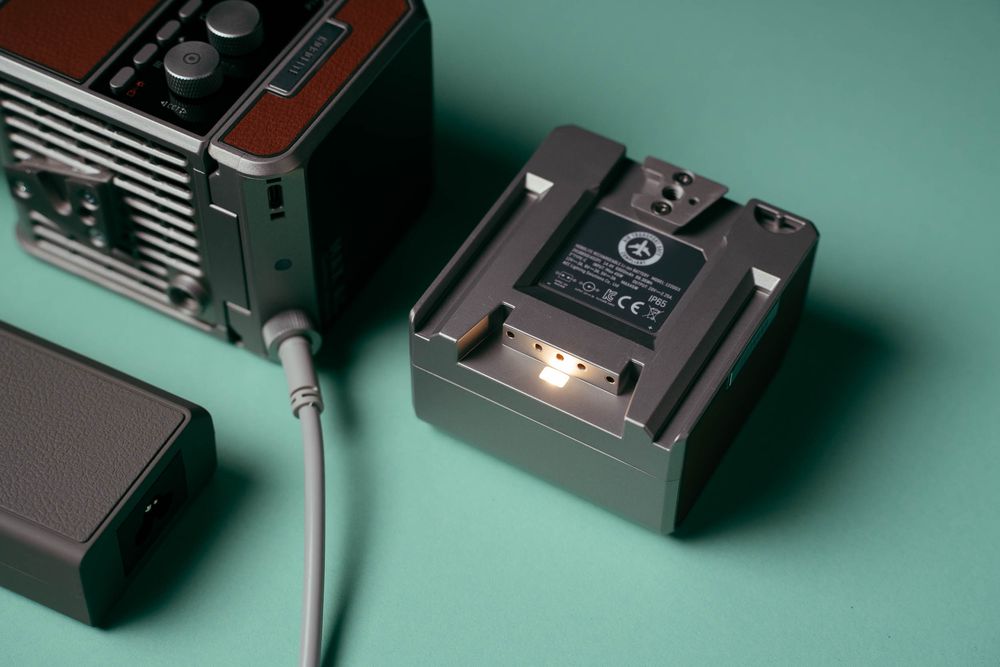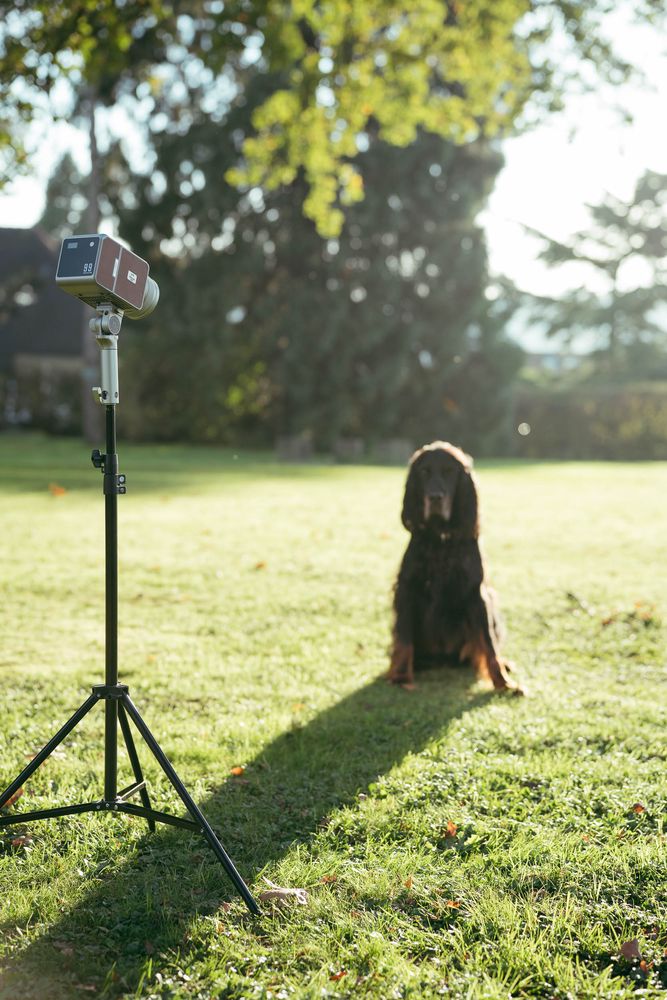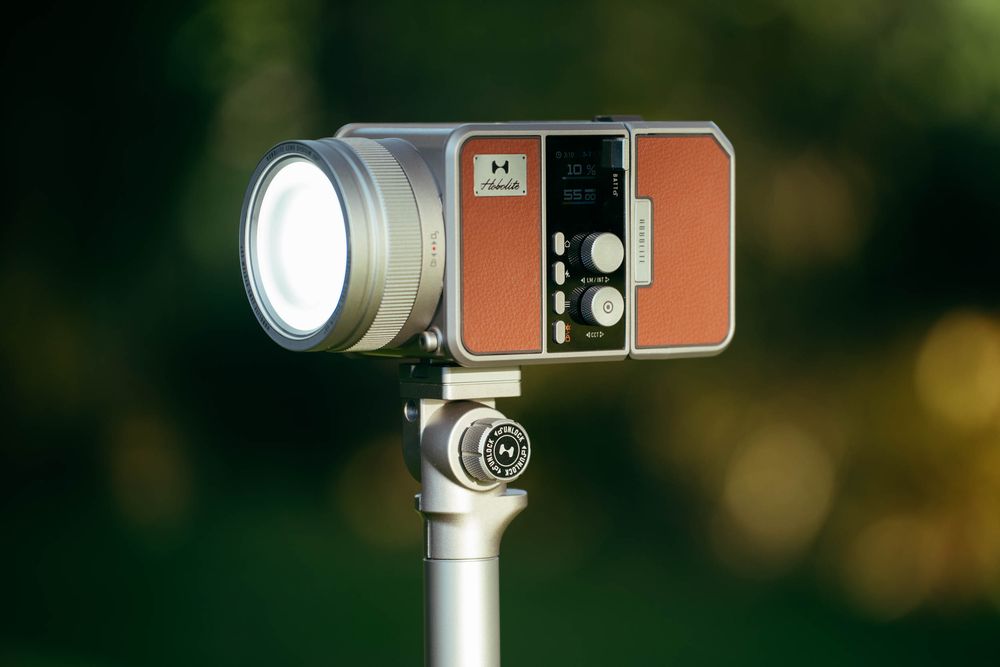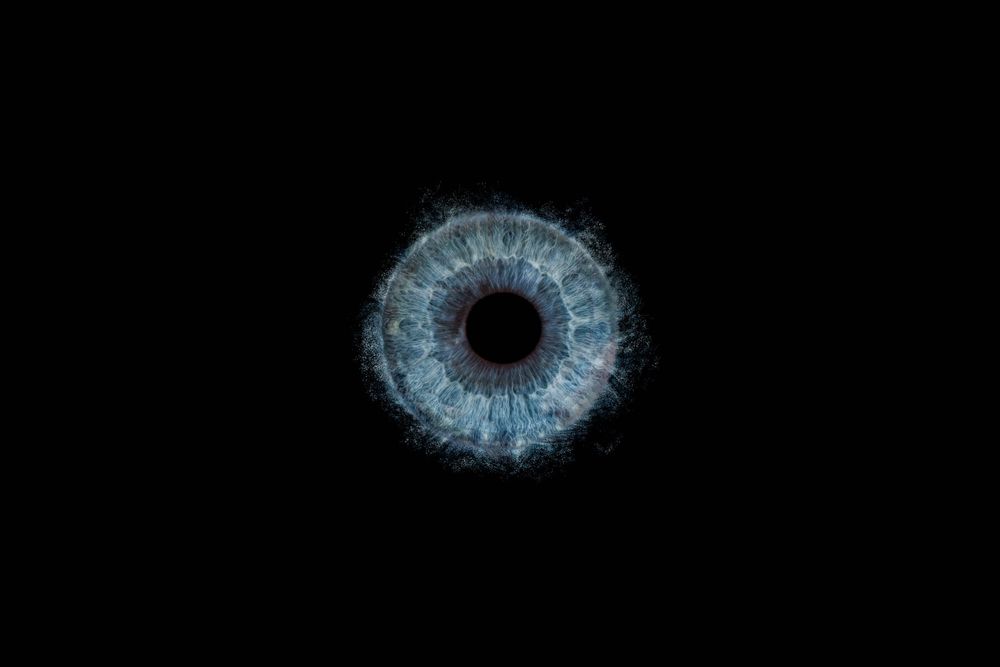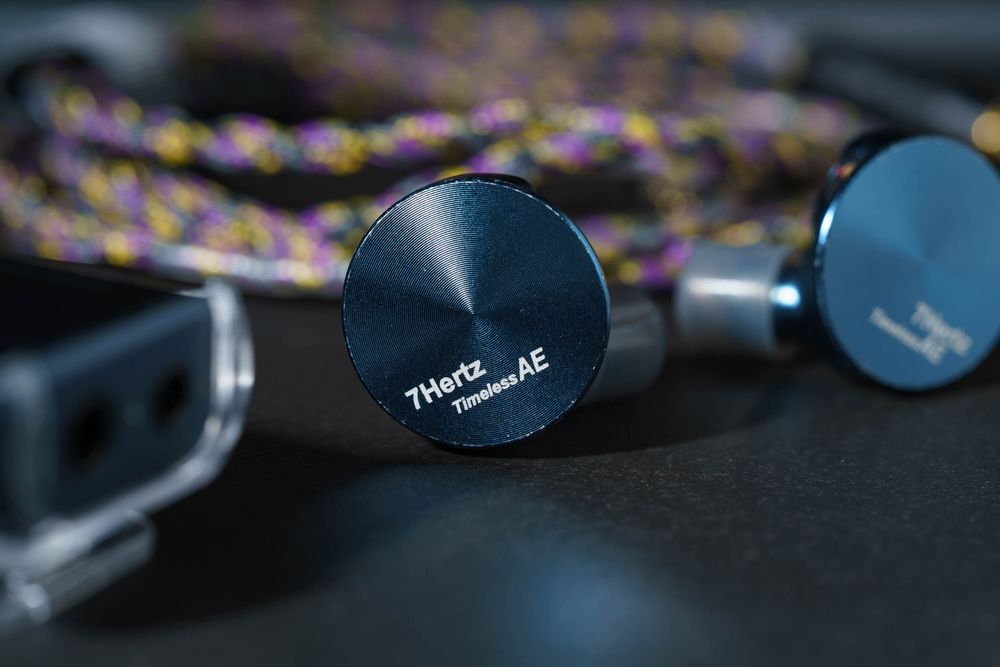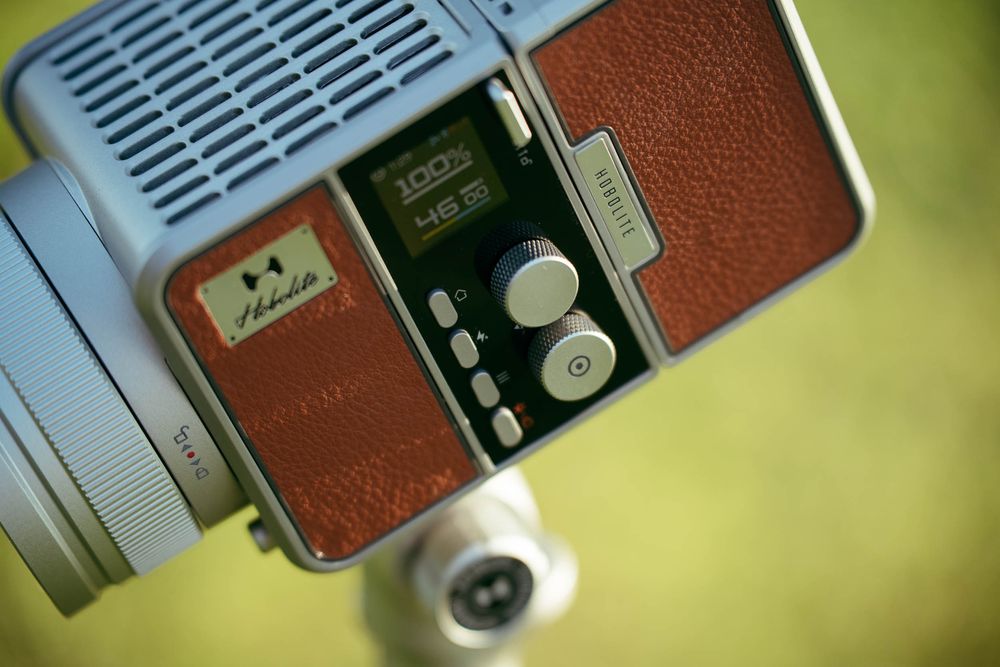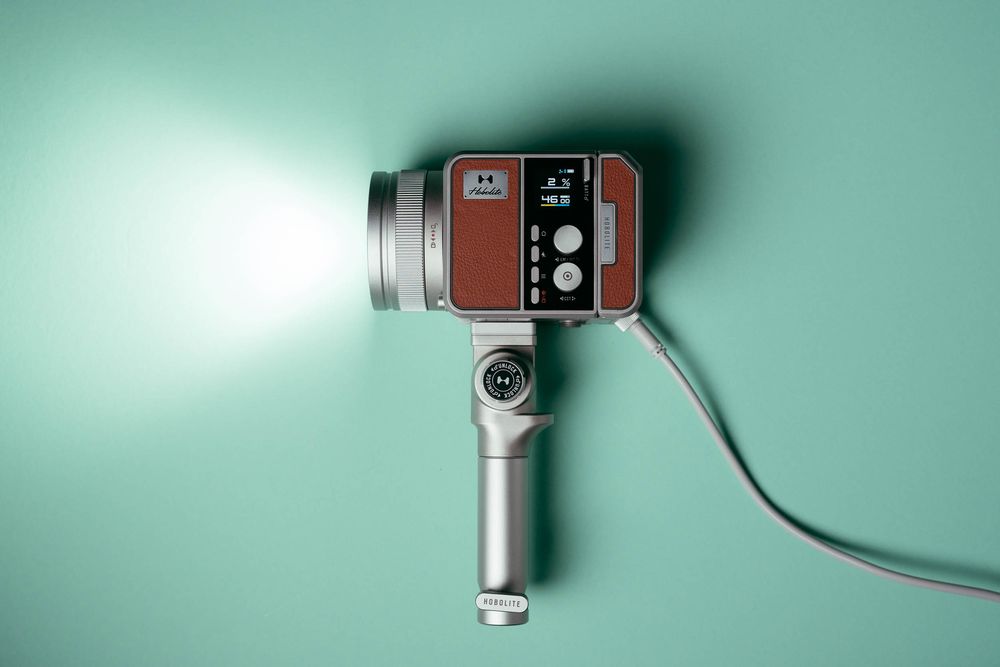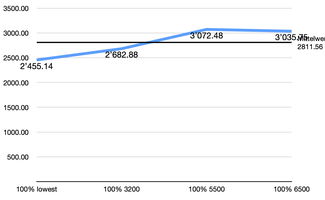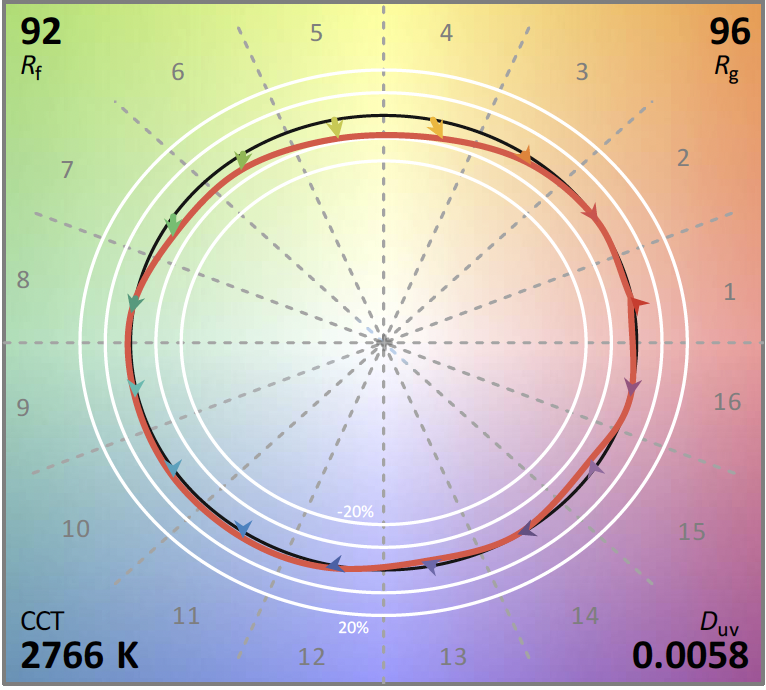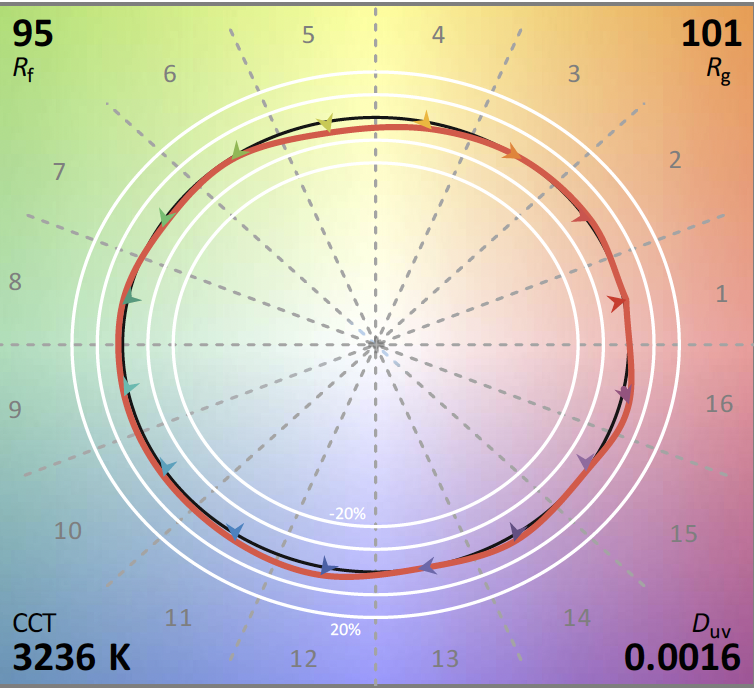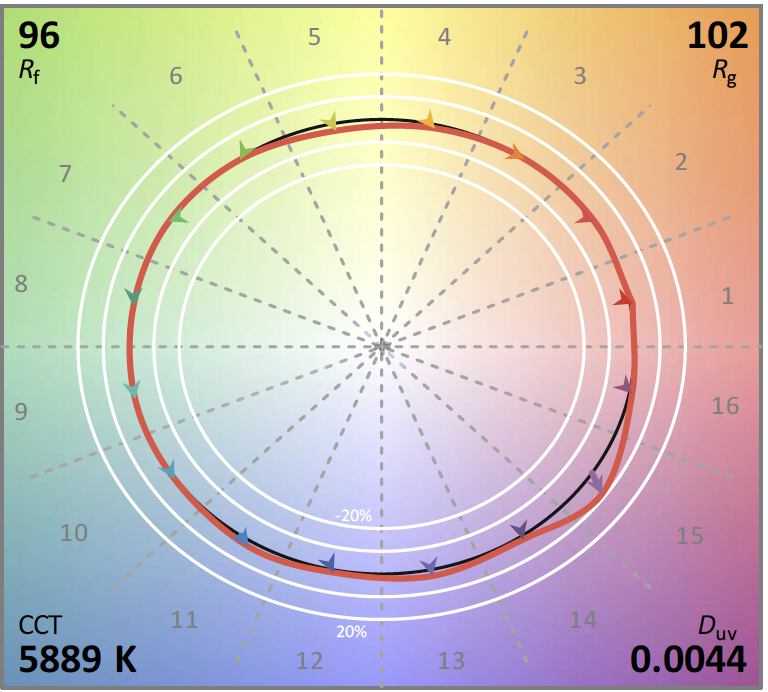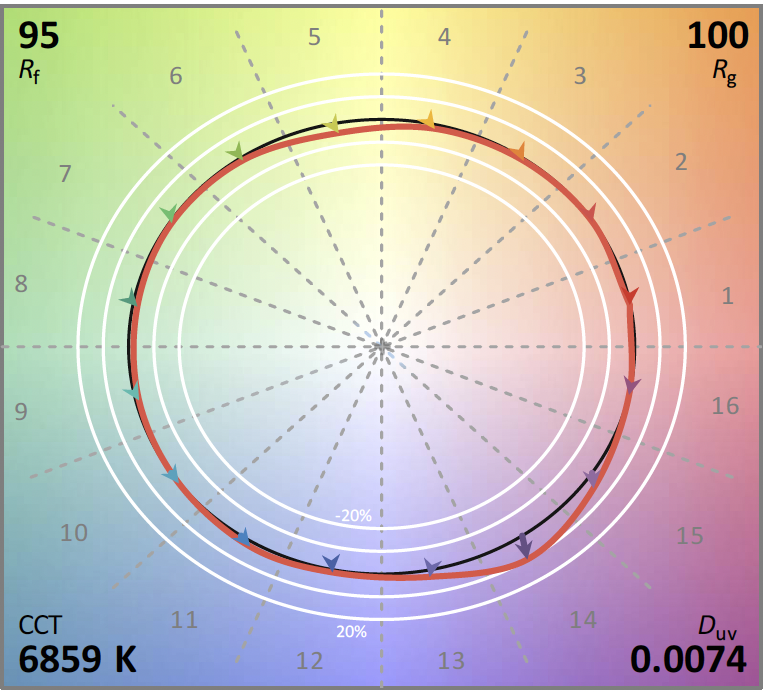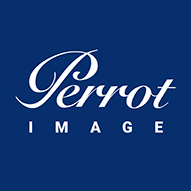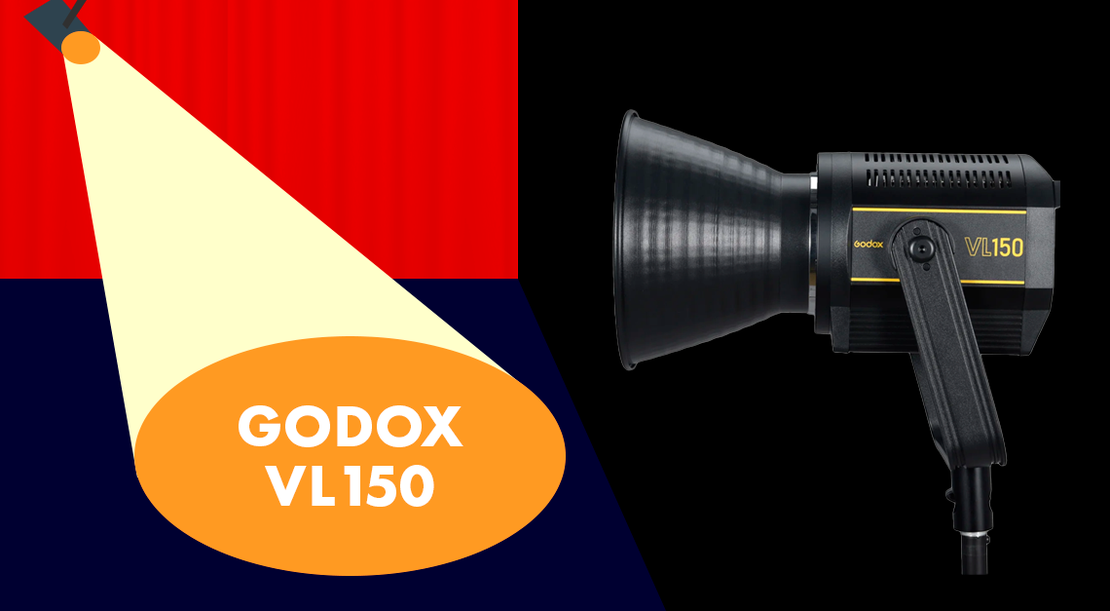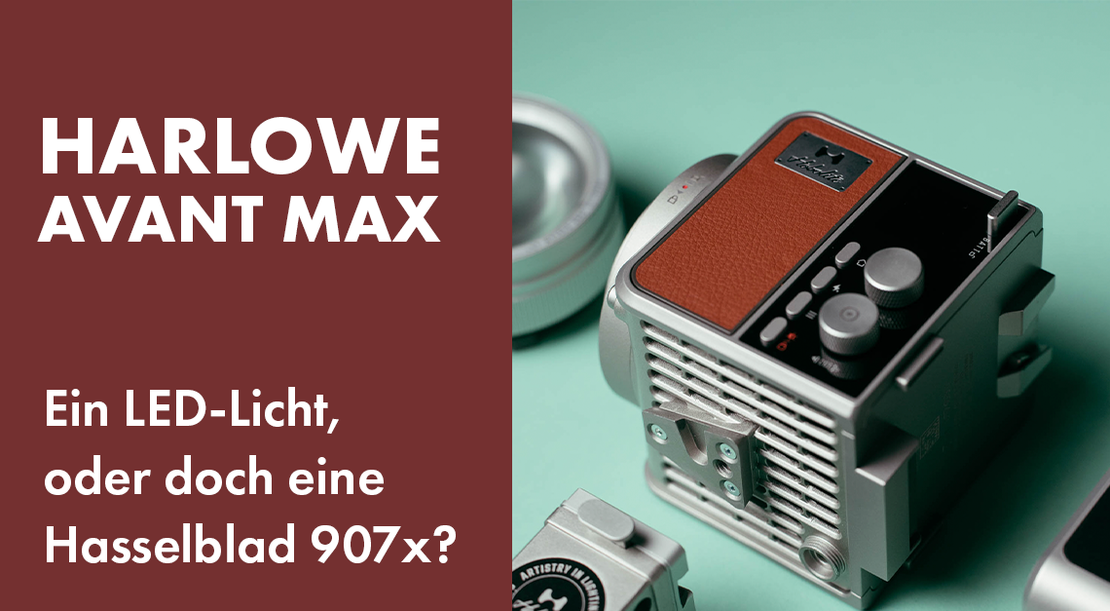
Harlowe Avant Max Review - 80W Bi-Color LED COB Light
- Marvin Kuhn
- Review , Lights
- April 4, 2025
Table of Contents
When looking for continuous lighting, you often come across boring, similar-looking lights. But not with Harlowe. They stand out with an elegant design reminiscent of vintage Hasselblad box cameras. With their latest series, Harlowe has focused more on portability, and I had the opportunity to take a closer look at the Avant Max model for you. I’ve tested whether this light can impress not only with its design but also with its performance.
What’s Included
The Avant Max is an 80W bi-color continuous light that promises to compete with lights of significantly higher power classes. According to Harlowe, the light has a color temperature range from 2700K to 6500K and achieves CRI and TLCI values over 96. The Harlowe Avant Max comes in an elegant, black, and unobtrusive box. Upon closer inspection, stylish details emerge on the packaging, subtly depicting the light itself and the contents – a sophisticated visual effect that adds a special touch to the presentation.
The outstanding craftsmanship is noticeable immediately upon unpacking. The housing is made entirely of aluminum – except for the sides – and has no unsightly gaps, which creates a premium impression. The included lens also feels high-quality and is encased in aluminum on the outside. This 45-degree lens is excellent for targeted lighting effects and enhances the solid impression of the entire setup. The standard kit also includes two cables and a 100W power supply. Particularly practical is the standardized D-Tap-to-barrel-plug cable, which offers flexibility if you need a longer cable.
Additionally, a mains/USB-C adapter is included, which can be mounted instead of the battery. The battery, which plays a central role for use away from power outlets, has a capacity of 99Wh and can not only power the light but also serve as a USB-C power bank. For this purpose, two USB-C ports and a D-Tap connection are available. If the battery is empty, it can be charged either via USB-C with up to 45W or directly on the light.
Another well-thought-out feature is the display on the battery, which shows the current charge status or remaining operating time – a practical tool to keep track of energy management. A small but useful detail is the lamp integrated into the battery, which helps to quickly find the light in the dark. A real highlight is the aluminum tilt mount – when adjusting the angle, it noticeably and audibly clicks into various positions. Additionally, the light is securely attached to the tilt mount using a V-mount system.
Despite the well-conceived equipment, I miss a suitable transport bag in the package, which would round off the portable setup. Such a bag would not only have practical advantages but would further enhance the professional overall impression. I also would have found it desirable if color filters and the Bowens mount adapter were included as standard.
In Use
I love the light’s appearance, even though I’m not necessarily a retro fan. Nevertheless, it looks refreshingly different: minimalist and modern on one hand, classic like a Hasselblad on the other. Now the question arises: Can you really work with this beautiful piece, or does “design over function” apply here?
During testing, I tried the light for various purposes – key, rim, fill, etc. – and got a sense of who would benefit from it. I always kept in mind the 80W power class, which isn’t considered a powerhouse for either photo or video studio work. It seems clear that the light isn’t primarily aimed at studio owners, but rather at creatives who are often on the go and frequently work away from power outlets. It would be particularly interesting for those whose clientele is predominantly in the B2C rather than the B2B sector.
Let me briefly explain why this light is particularly targeted at creatives with private clientele. Feel free to skip this paragraph if you’re not interested. The interests of B2C customers differ significantly from those of B2B customers. For most B2B clients, only the result counts, and how it was achieved usually doesn’t matter – assignments are almost exclusively awarded based on results. For B2C clients, however, everything matters: both the result and the entire experience. Those who appear with stylish equipment can not only charge higher prices but also leave a better impression on the client.
During my testing phase, the light proved to be very versatile, especially with the included lens. It’s excellent as a fill and accent light and offers more than enough power both in the studio and on the go. A particularly positive aspect is that the battery can utilize the light’s full power, which increases flexibility on the go.
As a key light with a softbox, however, the light couldn’t fully convince me. Due to the missing Bowens adapter and the “just” 80W, the selection of suitable softboxes is very limited. Personally, I see the upper limit at a 65 cm softbox, which may still be sufficient for some studio purposes. This also made clear to me why the light doesn’t come with more accessories, such as a Bowens adapter – it simply doesn’t have enough power to properly illuminate most softboxes.
Where the light really shines, however, is portability. Thanks to the battery system and compact design, it’s easy to transport. Even though there are more compact lights, I don’t want to make a comparison here, as I haven’t tested them yet. Nevertheless, I find that the slightly larger design is a good compromise between portability and user-friendliness.
With the 100Wh battery, the light runs for over 70 minutes at full power and can, fortunately, be operated with standard V-mount batteries. If a power outlet or a 100W power bank is available, the setup can be further reduced, so you don’t always have to carry the V-mount battery.
Now for the operation, which was initially somewhat confusing during my unboxing. At first, I couldn’t figure out how to turn on the light, as there’s no obvious on/off switch. To activate the light, you need to press and hold the lower dial and turn it – a concept that didn’t completely convince me. A simple on/off switch would have been more intuitive, faster, and clearer.
However, once the light is turned on, operation is very intuitive. There are several buttons and two dials on the device. One is stepless for brightness, while the other has defined clicks for color temperature, making it easier to distinguish the controls and make precise adjustments. The brightness can be regulated from 0% to 100% in 1% increments or adjusted in 25% steps by pressing the dial. The color temperature can be changed between 2700K and 6500K in 100K steps, or you can select from Harlowe’s preset values, which are also activated by clicking on the dial. The color display shows the current settings and underscores the well-thought-out design, which is not only functional but also aesthetically pleasing.
The app integration is also very well implemented. Pairing is quick and uncomplicated via NFC, which significantly simplifies the process. All changes to settings are adopted directly by the light without delay. However, I miss some additional functions in the app that go beyond what’s possible on the device itself. Particularly useful would be custom presets that are not only available in groups and scenes. This would simplify addressing individual lights. However, if you like working with scenes and groups, you’ll feel at home here.
In the Lab
Design, craftsmanship, and software are all useless if the light quality isn’t good. To find out, I tested the light for you. I tested the light with a spectrometer and took a closer look at the following parameters: brightness and how consistent the brightness is across the CCT range. I paid particular attention to color accuracy and used the latest standards for evaluation.
In my tests, the Avant Max reached a peak brightness of 3070 lux at 1m without the lens, which corresponds to approximately 10.1 EV. However, this light output is slightly below average, where similar power levels achieve around 5000 lux. This is surprising, as the marketing material talks a lot about efficiency. Despite the slightly below-average efficiency, the light output is sufficient. If you need more light and aren’t using a softbox, you can achieve 10,600 lux with the included lens, which is comparable to a 180W LED light without a light shaper.
What you need to consider is that the fan runs continuously if you want to achieve this brightness. Only below 20% brightness can the fan be turned off. However, since the fan is relatively quiet, this shouldn’t be a problem in most cases.
Additionally, I measured the linearity of the brightness settings and the consistency of light output at different CCT values. The linearity of the light is good and within a normal range: 10% power actually corresponds to about 15%, while 50% power is about 54%. However, I would have expected a bit more from the brightness across the CCT range, as the brightest and darkest values are 0.3 stops apart, which is generally normal for non-cinema lights. This is less relevant for photography than for videography, yet the light plays in a different league with its price than the typical 80W LED light.
Finally, I checked the light quality, which in my opinion is much more important. To evaluate the light quality, I took a closer look at the CCT, Duv, TM-30, and SSI values, as these currently have the greatest significance for light quality.
Let’s start with CCT accuracy, as this is the only metric that didn’t convince me. An average Mk-1 score of under 9 is good, but doesn’t show the whole picture. Looking at the values from 3200K in the dataset, the values are just under 11, which results in a noticeable color temperature shift, with a maximum value of over 14 – and that’s not acceptable for this price. However, I would like to note that with the lens, the color temperature accuracy improves; for example, nearly 6900K becomes ~6650K.
In contrast, the DUV shift is even with a maximum of 0.007, which corresponds to about 0.25G shift. This value is within an acceptable range, and since we have about the same shift across the entire CCT spectrum, the green tint can be easily corrected.
The light also scores well in other metrics: The TM-30 values, with an average RF score of 94 and an RG score of 100, are also in the positive range. The SSI values are also within the expected range, with an SSI value of 84 at 3200K and 74 at 5500K. I would focus more on the SSI for the color metrics, as it evaluates the match with reference sources and their spectra.
Conclusion
After extensive tests where I thoroughly examined the light, the question now is: Is this product worth it? Basically, there are many positive aspects that speak for the light. On one hand, it impresses with its appealing design, excellent craftsmanship, and well-thought-out accessory system. On the other hand, it scores with good SSI and TM-30 values and a light output that convinces in many areas of application. Additionally, it’s a real eye-catcher and often serves as a conversation starter – no matter where it’s used.
However, there are also aspects that didn’t quite meet my – admittedly high – expectations. Particularly the inaccurate CCT values stand out negatively to me, considering the asking price. Also, smaller details such as the awkward power button, the permanently running fan, and the inability to store custom presets in the app diminish the overall impression. These weaknesses indicate that Harlowe still has room for improvement to catapult the light into the top league. Many of these points could be addressed through a simple software update.
Whether this light is suitable for you depends heavily on your individual requirements. I see the Avant Max primarily with creative users who frequently work in the B2C sector, such as wedding photographers or outdoor photographers. Especially for this target group, who often work mobile and away from power outlets, it could be a sensible addition. However, if you primarily work in a studio or regularly handle demanding B2B projects, you might want to go straight for Harlowe’s Pro series.
Related Articles
Instagram Examples
IG Video 1
IG Video 2
IG Video 3
Youtube Videos
YT Unboxing
YT Review
Partner
This article was created in collaboration with Perrot Image SA. I received the light free of charge for this test report. However, this has no influence on my opinion and assessment of the product. I tested the light independently and gave my honest opinion about it.

